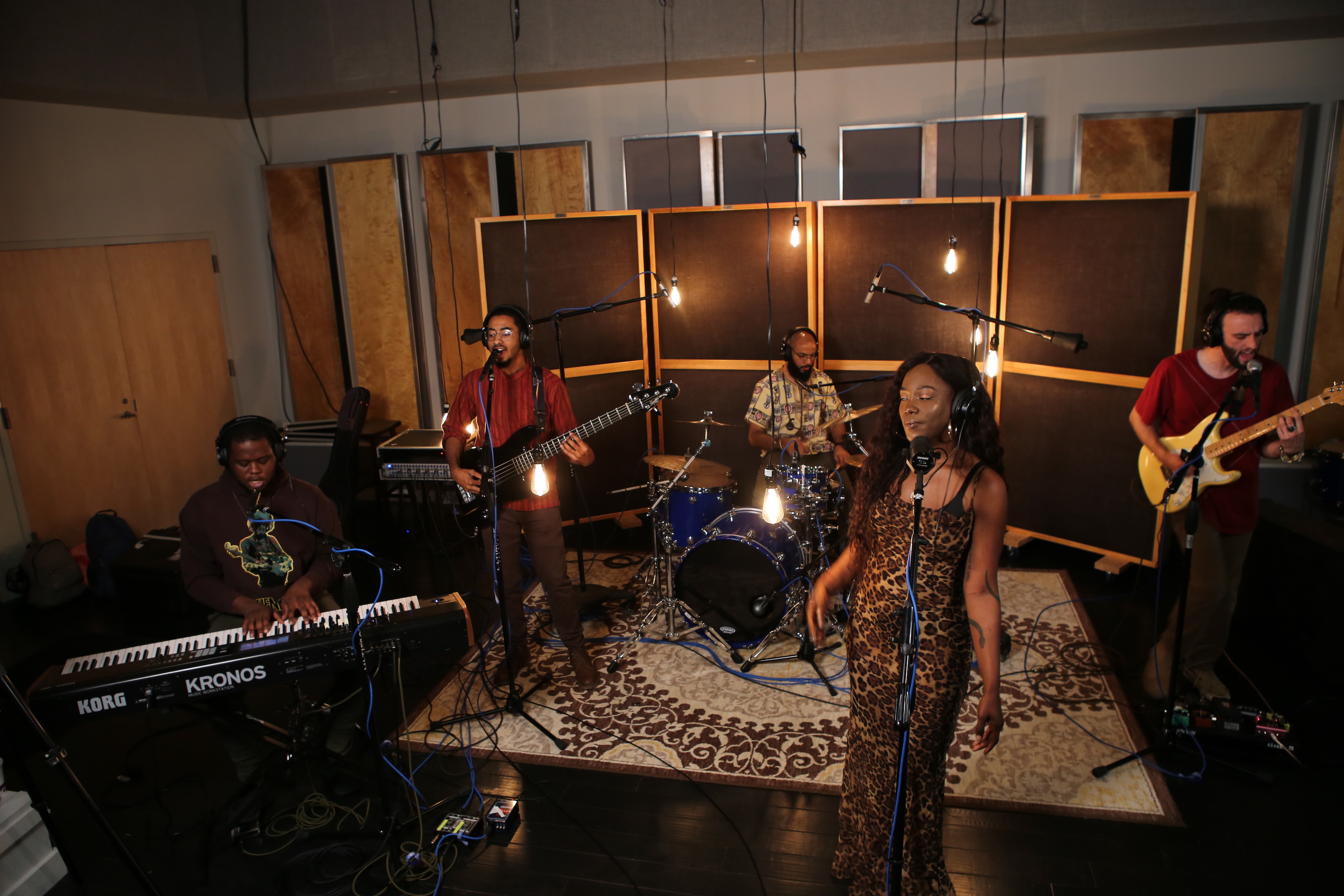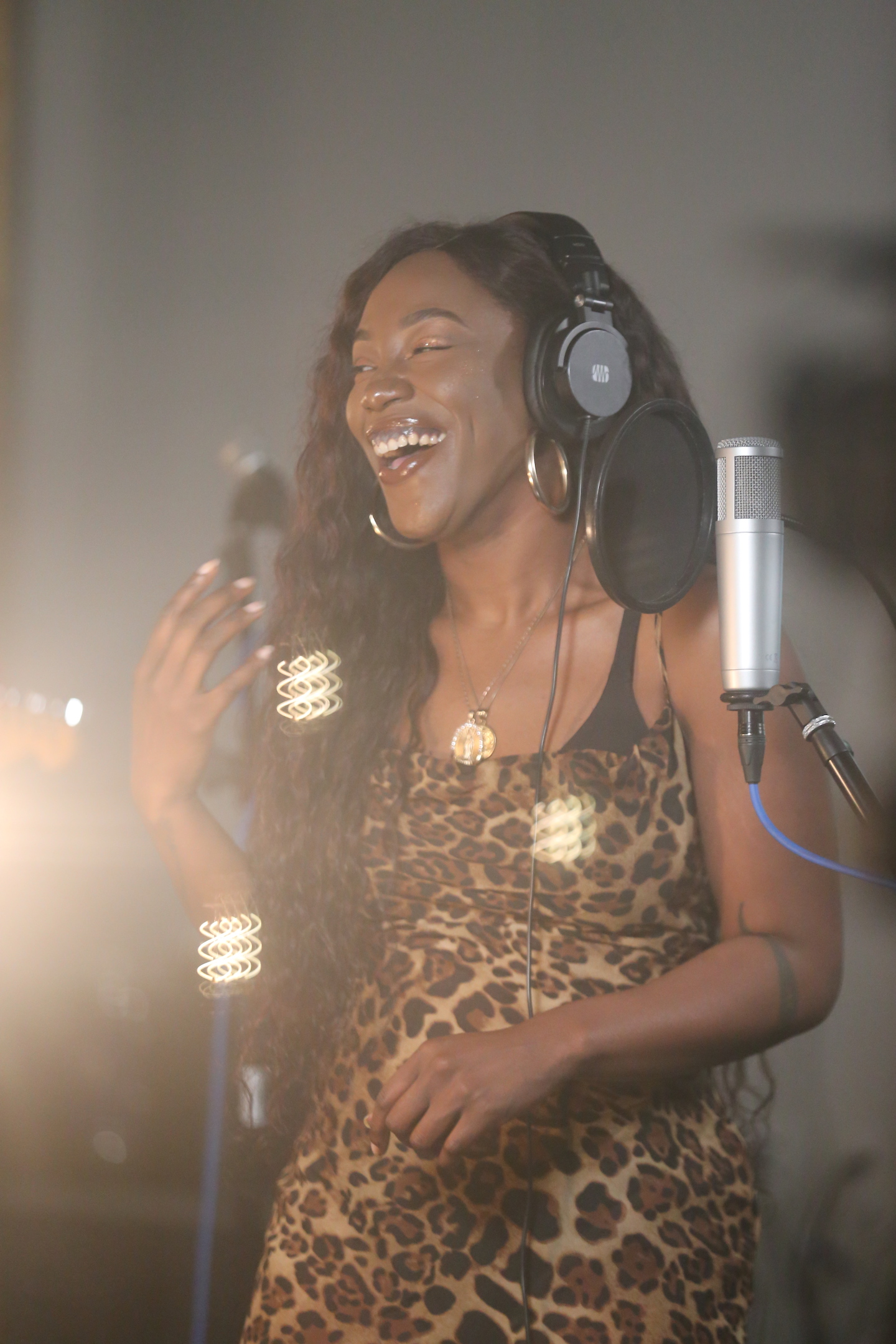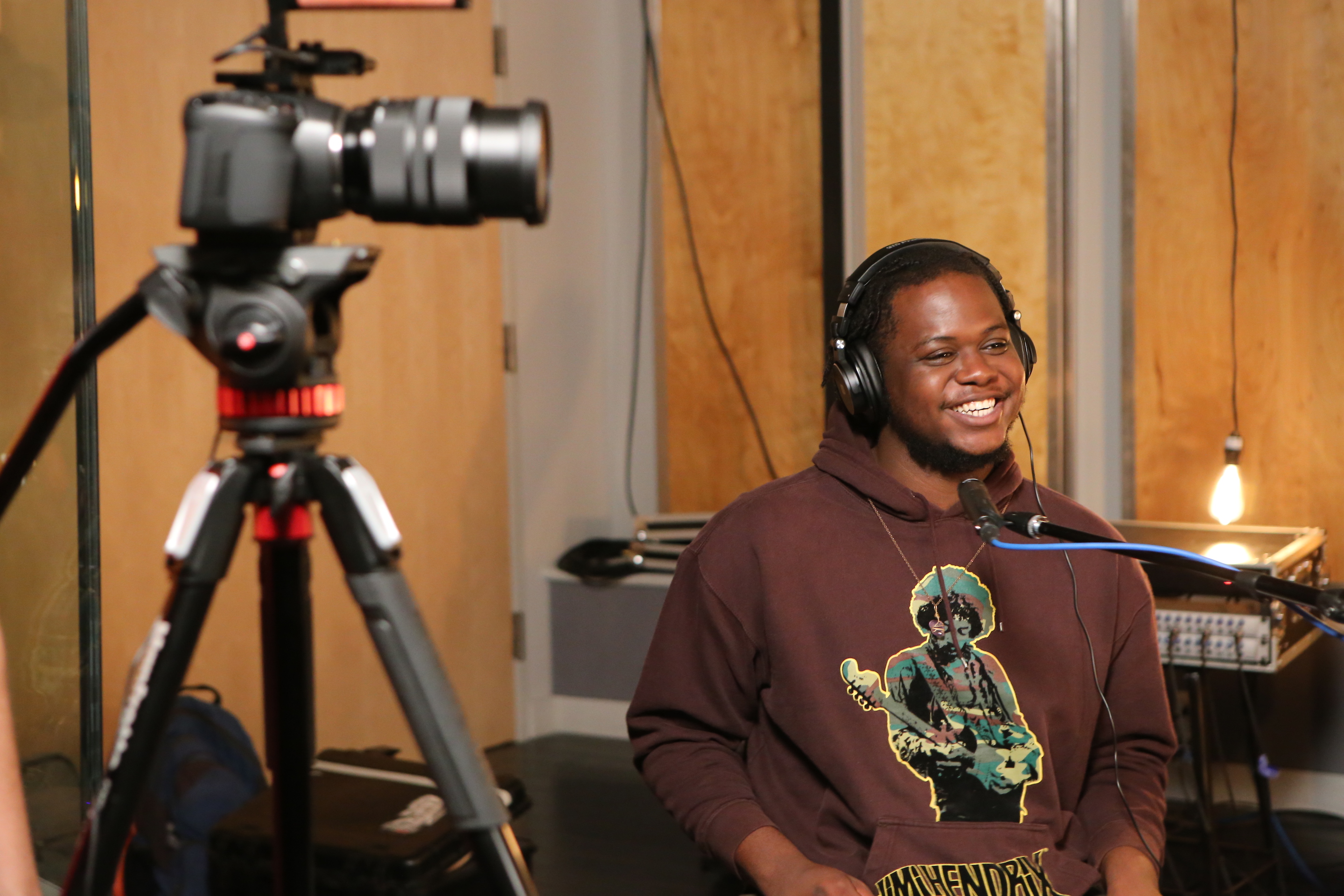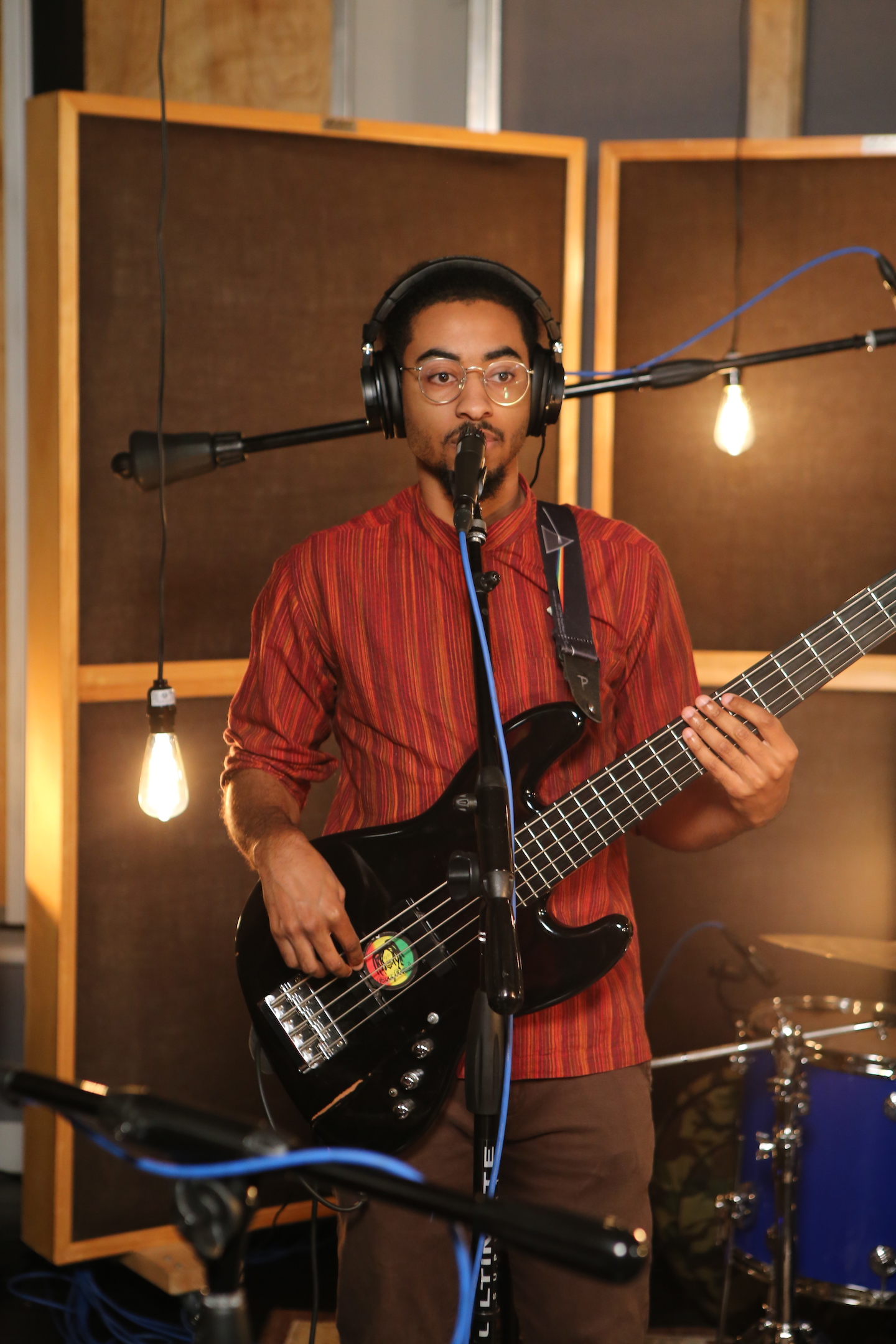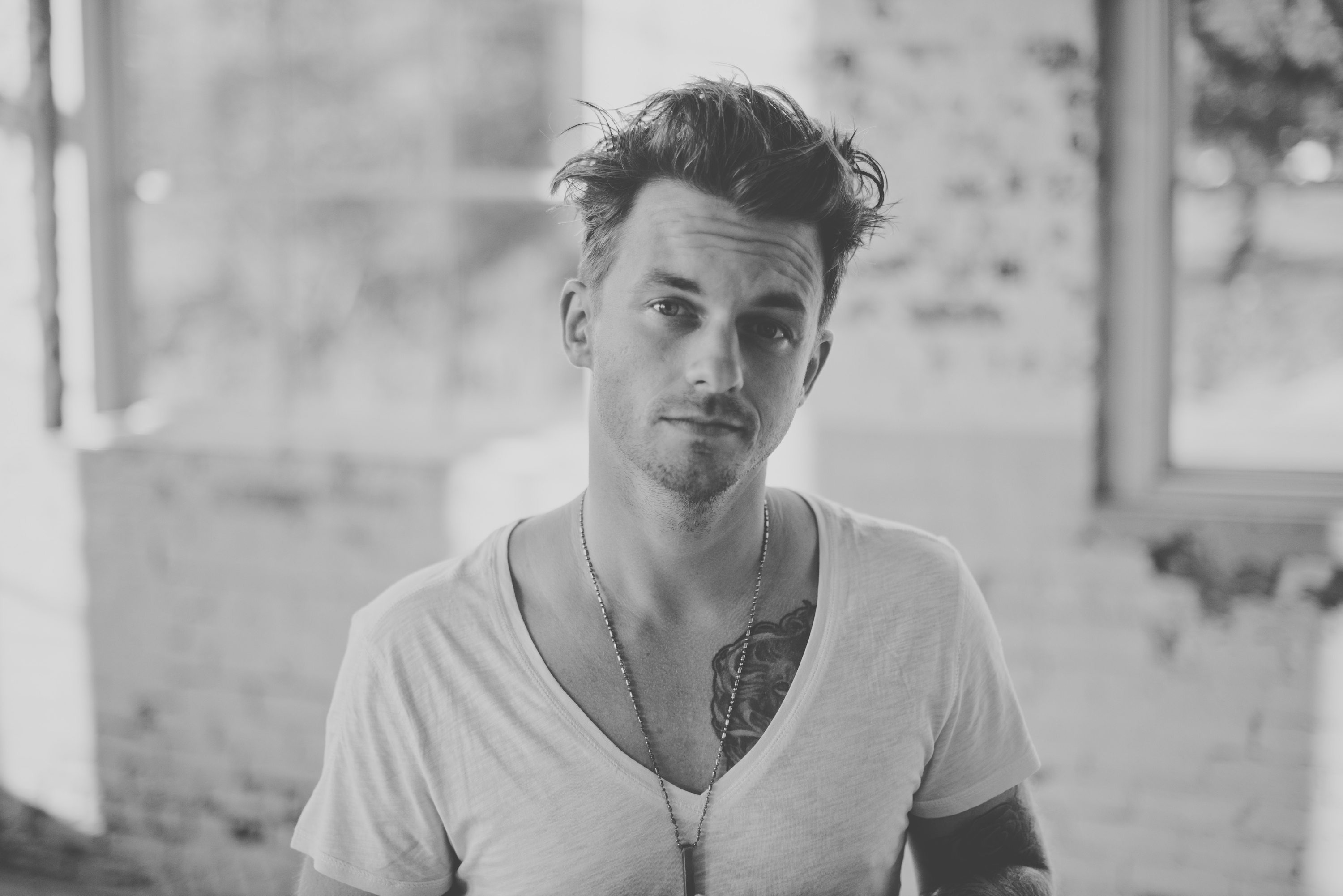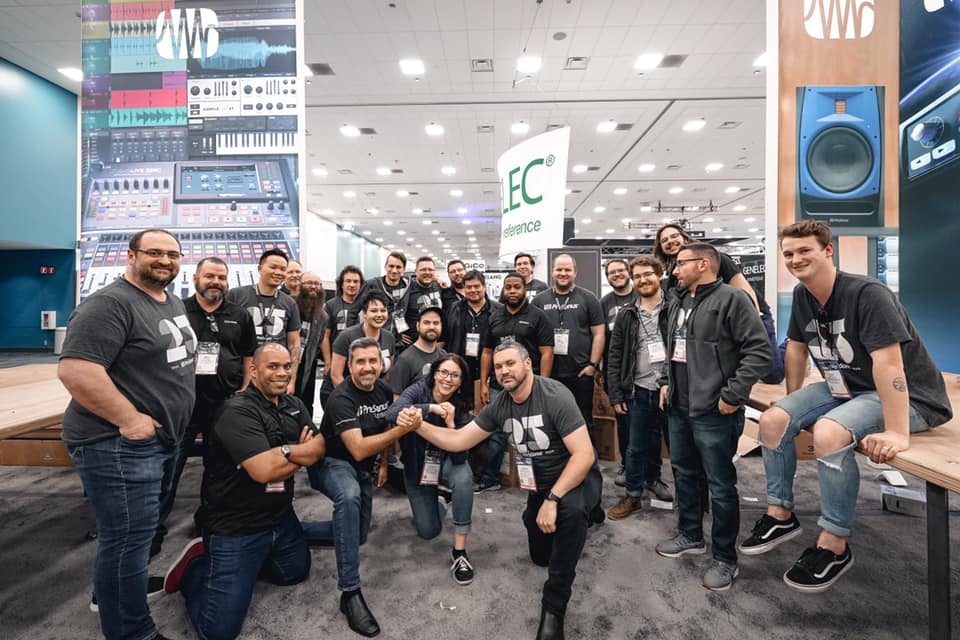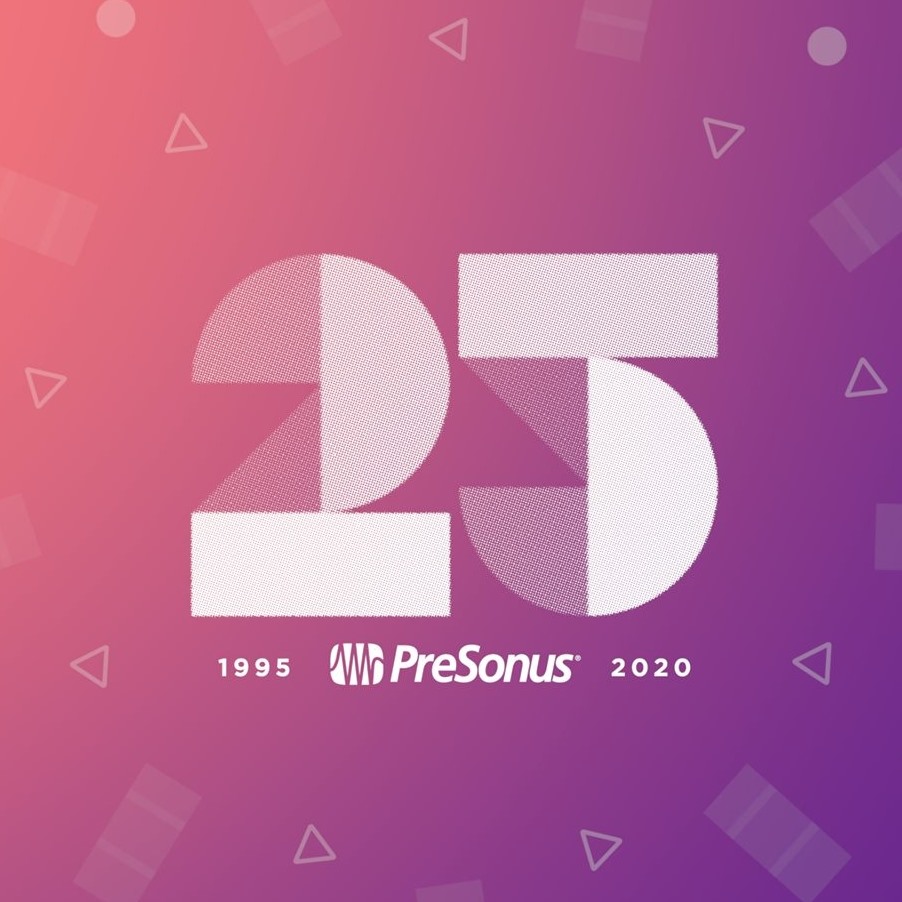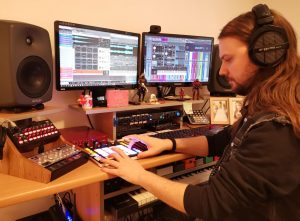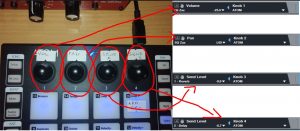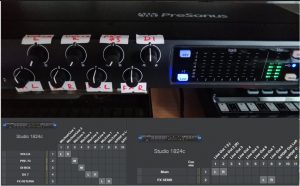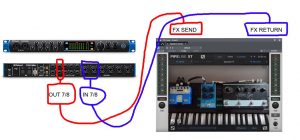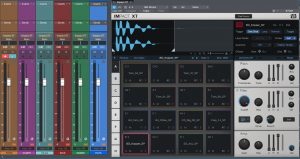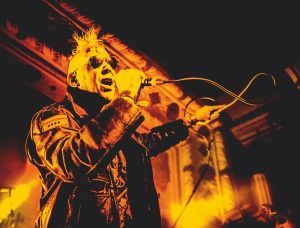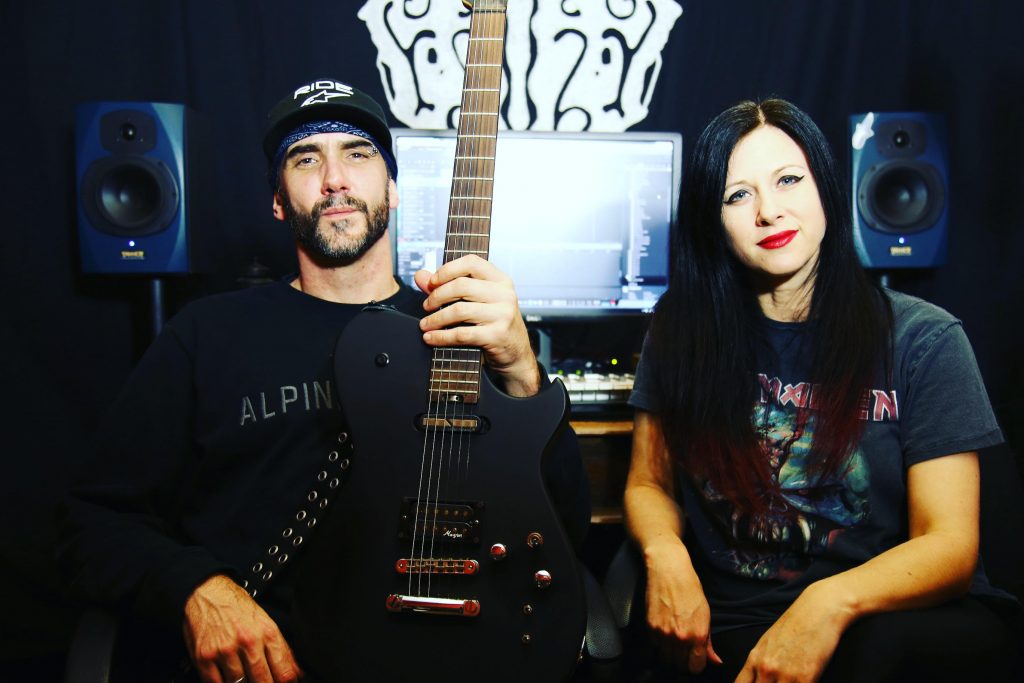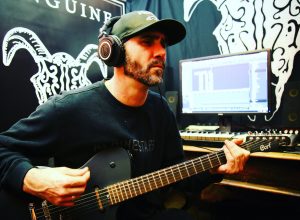Category Archives: Artist
River City Session: Sydney and The SAMS
Music is essential.
And that’s why we’re excited to share the next episode of River City Sessions. This month, we’re sharing an original song titled “Papi Chulo,” by South Louisiana natives Sydney and The SAMS. Read more about the band, the song, and how it was recorded below.
Give us some background on yourself and the band. How long have you guys been making music?
We have been a band surprisingly for less than a year! I think we have a natural friendship and chemistry that makes people think that we’ve been together for years.
“Papi Chulo” Such a great song! Can you tell us when you wrote it? What’s the inspiration?
“Papi Chulo” was actually the first song I ever wrote! I (Sydney) recorded three years ago when I first started making music. When we got together as a band, we started incorporating some of my originals into our sets and this song became an instant hit with our fans.“Papi Chulo” is about liking a guy and wanting to hang out and smoke. It was actually about a guy I liked at the time and all we did was hang out in the car and talk.
Does writing a melody come naturally to you?
It depends. The beat has to be catchy. I have to find the melody and it kinda has to come to me. If I don’t feel it in a few minutes, I usually move on.
Where do your ideas for songs come from?
All my music comes from personal experiences. I feel like songwriting is therapy to me. The fact that it’s relatable to listeners is just extra. It feels good to know my lyric is relatable and people have been in the same positions as me and felt like I’ve felt at some point. That’s the point of music; to touch people in some way whether it be a happy emotion or a sad one.
Can you describe the first time you wrote a song?
I found this cool beat on YouTube and just started writing. It’s always something I’ve wanted to do but never really tried to do. One day I was like, “whatever, I’ll try.” I did a rough record on my phone and sent to NJ (my engineer) and told him “If this sucks, tell me. If not, I wanna book a session.” And it’s been history ever since.
Do you prefer performing your own music or covers? What’s the difference?
I enjoy both because even when we do covers, we always put our own little spin on it or rearrange it so it’s more our own. We also do medleys with our originals to kinda bring the crowd back and make them interact with us. Ultimately it’s about having a good time and making sure the crowd has an amazing, memorable time.
How has the Coronavirus affected your music?
We used to gig so much and it really put all our gigging and traveling at a complete halt. At first it was creatively discouraging but we decided to virtual concerts to continue to perform and connect with our fans in a different way. People really loved them and received it really well. Livestreaming is a way for us to reconnect and stay fresh. It also gave us time to finish our EP which will be released this July!
Now that the coronavirus has thrown a wrench in everything, What do you miss most about performing live?
I miss having fun with the crowds mostly. Dancing and singing with them was the most fun part of it all. As a concertgoer, that was my most memorable time and now as an entertainer, I want every person in the room dancing and having an amazing time! I hope we do that every time.
Do you plan on doing any live streams?
We’ve done two live-stream virtual concerts. We’ll be live streaming our EP release concert and party as well. So y’all join the fun!
WATCH the performance here.
Connect with Sydney and THE SAMS on Facebook
Follow Syndey on Instagram!
Band Together NOLA with StudioLive and Studio One!
PreSonus is honored to support all efforts by first responders and health care workers across the globe during this odd, hard time.
Last month, we had the opportunity to sponsor an event called “Band Together NOLA” for a virtual, live-streamed festival with more than 20 acts!
PJ Morton, Tank and the Bangas, Jon Cleary and more New Orleans’ musical heavy hitters played an online benefit festival to raise relief funds for the city’s musicians who have been out of work during the COVID-19 pandemic. So far, over $40,000 has been raised!
The Band Together virtual festival also featured Ivan Neville, Kermit Ruffins, Galactic’s Stanton Moore, Nigel Hall, Cupid, Dawn Richard, Water Seed, Johnny Sketch and the Dirty Notes, Sean Ardoin, Flow Tribe, Glen David Andrews, Hasizzle, Shane Theriot, Elizabeth Lyons, Fermin Ceballo, Bruce “Sunpie” Barnes, Kelly Love Jones, LeTrainiump, and Caren Green.
Our friend, Steve Himelfarb, was the engineer for six of the acts using a StudioLive 32 and Studio One Professional. We took some time to talk about his experience with the live stream and his career.
Before we get started here are four fun facts about Steve:
- He owns New Orleans Cake Cafe and Bakery off Chartres Street. He got his start in pastry selling them door to door–he literally baked the cakes and sold them by the slice to his neighbors. This grew into a cake shop in the French Quarter that ran for several years, and now a storefront cake shop, bakery, and restaurant.

- One of Steve’s first jobs was at Capitol Records in LA. His job was to digitize old tapes from the 40s and 50s. Nat King Cole, Sinatra, etc. This is where he recognized the magic of making music and fell in love with it.
- One of the first artists he worked with was none other than Shelia E! While they were working on her sound and style in the studio, Prince would call to check in on how she was doing.
- During the COVID-19 crisis, not only has Steve shared his audio engineering talent for this benefit, but he also donated over 250 meals a day for six weeks to multiple local hospital first responders. He along with his wife, Becky, and small staff prepared the meals and delivered the meals daily! What a guy!
Our interview with Steve follows.
Tell us about Band Together NOLA. How did it come to be? What was your role?
New Orleans is known for its tourism, food, and of course live music. The pandemic has put much of that to a halt which has left musicians our of work. The Band Together Online Benefit Concert took place on April 25 and helped New Orleans musicians whose livelihoods have been decimated by the COVID-19 pandemic. I am a part of multiple non-profits, and serving the community has always been something that I strive to do no matter where I live or what job I have. I was approached with the opportunity to participate with Lou Hill and Kermit Ruffins, it was a no-brainer. I was in!
Sounds like a huge undertaking. Did you know what you were getting into before you got started?
Yes and no. I had taken a break from the audio industry to focus on several other projects. Three years ago, my childhood friend, Tori Amos, had a show in New Orleans. From the stage, she says, “I’d like to thank the person responsible for me being here… Thank you Steve!” From that moment on, I knew I wanted to get back into recording and producing music and saying “Yes” to whatever opportunities came my way. Getting back into audio after a 20-year hiatus was like learning a whole new language that sounded familiar. Everything was the same but what changed was the technology. So, yes, it did seem like a huge undertaking but I was up and willing for the challenge.
We used a PreSonus StudioLive 32, multiple PX-1 mics and Studio One Professional, of course.
After watching the live stream, it looks like you recorded in multiple locations. How challenging was it recording in multiple locations?
We recorded six bands, all on the fly. Each band did a few songs, then we had a soundcheck for the next band all while doing our best to keep social distance guidelines. It was super hectic and everything was happening so fast. The onboard EQ and limiters on the 32 were AMAZING! We had no problem at all. This was very important and there was no room for a hiccup because everything was moving so fast. Once one band left, we had to wash down the stage and all the cables and mics to get ready for the next band to arrive. With the StudioLive 32, it was really a best-case scenario. Set up was easy, no distortion at all, the mixes sounded great.
What’s something you learned about live streaming?
With these harsh conditions and because everything is happening so fast, you have to be able to trust the gear you’re using. Be prepared, make sure the equipment is working, and use PreSonus.
Follow the New Orleans Cake Cafe and Bakery on Facebook!
Add Studio One to your workflow NOW for 30% off!
River City Session: Molly Taylor and Denton Hatcher Perform “Bartending”
Last November our friends Molly and Denton got hitched! A few days before their wedding, they stopped by River City Studios to record another River City Session. They recorded an original song titled “Bartending” written by Molly Taylor. Thank you, Molly and Denton for taking the time out of your busy week to join us and share your song. Read more about Molly and Denton’s track below and learn how audio engineer Wesley DeVore, recorded the song.
Give us some background on yourself. How long have you guys been making music?
We have been writing and performing our own music separately for over 15 years now. We started performing together about 2 years ago and we got hitched last November!
“Bartending!” Such a great jam! Can you tell us when you wrote it? What’s the inspiration?
Molly wrote the song because she worked as a bartender for 10 years! If you ever stopped by a bar in Baton Rouge, chances are Molly’s served you!
Does writing a melody come naturally to you?
Writing music is something that comes naturally to Denton and I. We are both individual songwriters with different ways of writing a song. It’s interesting and fun to connect and work with a partner to create a song that you both feel great about.
Do you prefer performing your own music or covers? What’s the difference?
We definitely love performing our own music but we love doing a good cover of a great oldie as well!
How has the Coronavirus affected your craft?
Due to restrictions in place because of Covid-19, we’ve had to cancel over 30 shows for us so far so it has affected us big time. We are ready to hit the road and start performing again!
Watch their River City Session here:
Wanna know more about how their session was recorded? Hear from the audio engineer, Wesley who captured all the magic here:
Gear used:
Music is Medicine: JST DAVID Tells All
PreSonus is honored to support all efforts by first responders and health care workers across the globe during this odd, hard time.
We recently had the opportunity to help out locally with an event called “Music Is Medicine” hosted by the Baton Rouge General Foundation and the Arts Council of Greater Baton Rouge. It was a small gesture, but our hope is that it leaves a lasting impact. Our friend JST DAVID was our connection to the event, and he did an incredible job producing, videoing, organizing, AND performing for the live-streamed event. This seems like a daunting task, but… as is the case in all things, hard work plus creative energy made for something awesome. He used a StudioLive AR12c to record each performance. We wanted to take some time and hear from David about how the experience was for him and how the StudioLive ARc performed. Read more from JST DAVID below.
JST DAVID says:
The “Music Is Medicine” event was an online benefit concert to raise funds for front-line health care workers, done in joint with the Baton Rouge General Foundation and the Arts Council of Greater Baton Rouge. I was initially asked to participate as an artist, and ended up producing the entire initiative. It was a thrill to be a part of such an incredible cause during these unprecedented times, and to play a small role in sharing God’s love with folks who are risking their lives to save others.
I honestly didn’t realize the number of limitations COVID-19 would pose in pulling together a production like this! The turnaround from start to finish was less than two weeks for a 90-minute, pre-recorded broadcast, along with a web platform that could display the broadcast stream and securely collect donations for the cause. Even though that’s incredibly ambitious, I’ve actually been responsible for executing projects with even tighter timeframes. Still, that was all pre-COVID, you know? Social distancing requirements forced us to either film and record these performances outside, or within venues that required a high level of health precautions for myself, my second shooter, and the talent. It was exhausting, to say the least. You can’t show up with a huge crew to these shoots, so I stepped in as the director, producer, audio engineer, and primary cameraman for all the performances.
On two of the shoots, we had to literally juice the AR12c from extension cords that were powered from our vehicle. Oh, and then I also had to figure out a way to record my own performance as well. I laugh thinking about it all, mainly because it all ended up being a success (we raised nearly $4000 for the hospital during the online event), and also laughing a bit at myself for thinking it would all be easier to pull off than it was.
And real talk, there’s absolutely NO WAY that we pull these off without that AR12c mixer provided by PreSonus. Lifesaver. After dialing in the levels and just the right amount of effects, I was able to record all of the performances straight from the mixer into my SD card. I didn’t even have to edit the audio once I was done! The time it saved me, and the utility of it being lightweight, portable, while still having so much to offer with effects and such, made the event happen. I basically had to stay up for 2 days straight to get this thing to the finish line and didn’t make it on-site with the final file to broadcast until an hour before. No way this thing gets completed if the AR12c doesn’t do such an incredible job of speeding up my workflow.
As a lot of artists and creatives are finding out, live streaming is tough. Sure, anyone can flip open their phone camera and “start streaming.” But in order to bring your fans or followers something of quality, it takes a combination of having the right gear and a really well-coordinated plan. Thankfully I had enough sense to pre-record the entire “Music Is Medicine” event, and it was also what Baton Rouge General Foundation and the Arts Council of Greater Baton Rouge wanted to do. Once the final video file was rendered, we streamed the entire performance via OBS to Facebook LIVE, and it all went off smoothly. But yea, for those who are desiring to up the quality of their live streams or do a combination of pre-recorded and live within the same broadcast, it’s not that simple.
Having a great mic and interface would be my basic prerequisites (I personally own the PX-1 and Studio 26c combo from PreSonus), and there are several other great video and audio switchers and controllers that could really get you in a great space to be creative and make your broadcasts really engaging. OBS is a free, open-sourced software that’s incredibly stable and useful for powering your live streams, and I’d just encourage anyone looking to take their broadcasts to the next level to do as much research as possible on what’s out there. That’s what I had to do and it paid off.
Stay connected with JST DAVID here!
Ben Honeycutt Talks Career, Life in the RV and Studio One
Singer, songwriter, husband, father and RV driver Ben Honeycutt recently added Studio One Professional to his workflow, and let’s just say he’s having some fun! We partnered with him for his social series “Lyrical Content in the Comments,” and it was awesome.
We thought it would be cool to hear how one of the newest Studio One users is doing with the DAW and more about Ben’s career. Read all about it here.
Give us some background on yourself. How long have you been making music?
Well, I was born in the south (Tennessee), was raised in the south (Alabama), and lived in the south (Georgia) until recently. Thought I was gonna grow up and pitch for the Atlanta Braves, but that didn’t quite work out. I come from a pretty musical family, so I’ve always been around music in some way and had an interest in it, as well. Started playing guitar and singing when I was 13ish, and I was in a band for about 10 years after that. Currently, I live and travel full-time in an RV with my wife, Ashley, and our 3 kiddos, Trinity (9), Rhodes (7), and Canaan (2)!
How’s that RV life treating you?
It’s been an experience, to say the least! We started traveling at the start of 2020, and I think we were just starting to get the hang of it when we had to press pause for a minute due to the current pandemic. It was obviously a big decision for our family to sell everything and hit the road, but we were all ready for a change from the “norm,” while being more intentional about the time we have together and how we spend it. It’s had its challenges like anything else, but we’re really enjoying it so far!
How has the music industry changed since your early days?
Oh man. I remember when the be-all and end-all was to get a record deal if you wanted to make a career out of music. And that was definitely a goal of ours in the early days. It almost happened, but in hindsight, I’m glad it didn’t. Today, with the advance of technology and the rise of social media, you can basically distribute your own music everywhere with a click of a button. Of course, that’s over-simplified a bit, but you get the idea. No better time than now to be a self-employed creative/artist!
Describe the first time you wrote a song? Produced it?
Was anybody’s first song good? Haha! Mine definitely wasn’t. The first “real” song I remember writing was called, “Little Seed.” The melody wasn’t great, and I just took the lyrics almost verbatim from a story in the Bible. It even had the word epilepsy in it. Sooooo, we never recorded that one…
Who has been a musical influence in your life?
As I mentioned earlier, I grew up around music. Both my mom and dad have influenced me in my own musical journey. My dad played the fiddle and the banjo, and my mom had a beautiful singing voice. Unfortunately, they have both passed away now, but I’d like to say there’s still a little bit of them in my music and who I am today. As far as established artists as influences, it’s a pretty long list. But a few would be Ryan Tedder, U2, Ed Sheeran, and Jason Mraz.
Have you ever wanted to give up on music? What keeps you going?
I can’t recall a time where I flat out wanted to give up, but I’ve definitely hit some “walls” and seasons where I didn’t find as much joy in it. Like I said earlier, I grew up playing and singing in church, and as a Christian, I believe music is a gift from God. So when I hit those walls sometimes, I just have to take a step back and remember the reason I started.
When was the first time you heard of PreSonus?
I grew up and even honed my talent in the church world. So I remember being introduced to the live audio side of PreSonus products first, primarily the mixers/consoles. I probably know just enough about live mixing to be dangerous, so I left that to the more experienced. But even back then, I remember PreSonus being one of our go-to brands.
So you’re new to Studio One. When did you first hear about it?
Yeah, pretty much brand new! Again, I knew PreSonus more for the live audio equipment, but I wasn’t as in tune with the recording and production side of things. I think I just stumbled across some Studio One videos on YouTube as I was searching home studio tips and tutorials. Found a guy named Joe Gilder, who had some really good content on stuff I needed to learn and get better at. And it just so happened he used Studio One as his DAW of choice.
What DAW were you using?
I was actually just using Garageband. Which was pretty great, especially for the price of “free.” It helped me learn the basics of tracking and editing audio. But it was a bit limited in features, so eventually, I knew I needed to upgrade to something more professional to be able to achieve a better quality audio recording.
What features are you most impressed with the DAW?
So far, I really like the Auto Punch feature, as well as the Loop Record feature. Neither of which I could do in Garageband. Since I’m recording myself most of the time, it’s made tracking multiple takes and comping vocals much more time and energy-efficient.
How easy/difficult was Studio One to learn?
Well, I’m still learning, and I’m sure I haven’t even scratched the surface of all it can do. But for me, it was really easy to get started. The layout and aesthetic is pleasing to the eye, and it’s also pretty intuitive. I’m also taking advantage of the custom keyboard shortcuts. I do a lot of video editing in Adobe Premiere Pro, so it’s been nice to be able to match up some of those that I’m already used to with the similar functions used in audio editing, too.
Any other thoughts on Studio One or PreSonus gear?
Nothin’ but good stuff so far! I also use the dual-channel Studio 26c interface, and it’s performed like a champ. Customer service and resources online are top-notch, as well. I appreciate what you guys do!
Can you give us a rundown of your live stream set up?
That’s another thing that I (as many others during this time) have been trying to level up a bit, my setup has been a little different for the past few I’ve done. But in a nutshell, here’s my setup:
Rode NT1-A microphone > Bose ToneMatch Mixer (compression, eq, and reverb) > Studio 26c audio interface + iPhone 7+ > OBS (streaming software)
I also just recently added a Shure SM7B and a Canon M50 that I hope to be able to integrate soon to up the quality even more.
What’s next for you?
We’re looking forward to getting back out on the road and making some memories in the RV for sure! And musically, I can’t wait to play live gigs again. I’m also close to launching a custom song-writing service, which will include jingles for businesses/brands, as well as personal songs for people who want their own story in a well-written and produced song. Perfect for weddings and anniversaries!
WATCH Ben’s latest viral video here:
What’s the best advice you would give to yourself 10 years ago?
Tough one. But maybe something along the lines of, “Don’t obsess so much about what other people think about you or what you do.” That’s still something I struggle with today. I just want everybody to like me! But I’m learning that if you live for the applause of other people, you’ll also die from their criticism.
Studio One is on sale for a few more weeks! Join the family today.
Learn more about Ben here!
#PreSonusFamFriday: Company Wide Quarantine Edition!
It’s inspiring to see what our customers have created during these strange days of quarantine and isolation. As soon as you open your social media accounts, one thing is certain: Creativity has thrived over the last few months. We wanted to take a minute and share some of the after-hours projects and live streams PreSonus employees have been a part of during this time. Enjoy!
Product Specialist and Home Studio Guru Joe Gilder recently wrote this song simply titled “April.”
Several PreSonus team members collaborated on this performance. Hear all about it from EVP of Product Management, John Bastianelli.
“My PreSonus family is so awesome, please check out the first of the “PreSonus Isolation Jams” – Gregor Beyerle, who lives in Germany and is our Software Product Specialist started this track and sent it to me. I was immediately excited about what he created which inspired me to add some synth effects and saxophones. I then passed it to Rick Naqvi, our SVP of sales who added those awesome guitars. Next, the track was sent to Ben Livingston who works in our inside sales department who added his funky drums. Finally, we punted the track over to Richard Gaspard, who’s in charge of our worship market, he added his “rockin'” bass guitar… and sent the files back. I then doubled this really cool riff Richard played with horns and Rick and I mixed the music and sent the final mix to Gregor who created this awesome video. Oh, this was all done remotely, in our home studios on all PreSonus recording gear. I have to say I’m really proud to work for this company especially with all the talented people! Nothing can keep us from creating music, not even this virus! I hope you all enjoy our jam!”
Richard Gaspard is PreSonus’ House of Worship Market Manager. He’s been at PreSonus since November 2017, and been a PreSonus user since 2002.
“My wife and I formed the duo Highs and Lows, a musical experiment of arranging iconic songs as just bass (upright and electric) and vocals (mostly her on lead and the two of us on backgrounds). The point is to create very sparse arrangements, but also songs that feature the six-string bass as a solo instrument, covering any instrumental solos as part of the recorded performance. All mics used are either PreSonus PM-2 or PX-1, and everything is recorded through either a PreSonus Studio 26 or AudioBox 22VSL. All audio is edited and mixed in Studio One 4 Professional and video shot on iPhone 11 and edited in Adobe Premier using a shot template I created in Adobe Photoshop.”
Watch their performance here and subscribe to their YouTube channel:
Perry Tee (aka the.real.agent.p) is PreSonus’ Artist Relations Manager and has worked for PreSonus going on eight years.
“Some guys meet their buddies on the weekend to play golf or poker. We make music while practicing Social Distancing… remotely from our separate homes using Studio One.”
Eric Levy (keyboards): Night Ranger, Garaj Mahal
Jakubu Griffin (drums): Cirque Du Soleil Zarkana, Chaka Khan, Peabo Bryson, Melissa Manchester, Pearcy Sledge, David Cassidy, Pharez Whitted
Jon Cornell (bass): SNL Band, Jackie Greene, Grand Canyon
Alex Painter (voice): Life On Mars Tribute To David Bowie, Solo Artist
25 Years of WHABAM!
If there’s one word to sum up the man, the myth, the legend, Rick Naqvi… it’s: WHABAM!
Rick is as much of a staple to PreSonus as drag and drop is to Studio One. He loves his team, music, and his job! After spending a quarter-century serving the PreSonus family, he is the expert when it comes to selling PreSonus with passion and enthusiasm. If you’ve met him, you love him (and you’re probably still hypnotized by the Rick Effect.) And if you haven’t met him, here’s your chance to get to know him better.
How long have you worked for PreSonus?
This coming October will be my 25th year at PreSonus. I was employee #5 or #6 I believe.
What was your job title when you started? What is your job title now?
Well, I was the first guy in sales so I guess my title would have been “Rick Naqvi, Sales Guy.” Today my role is Senior Vice President of Global Sales.
What were you doing before working at PreSonus?
In my early 20s, I was playing in two bands (Zaemon and Chris LeBlanc Band), running a recording studio and working in a music store called BeBop Music Shop. I was finishing a Marketing degree at LSU at that time as well.
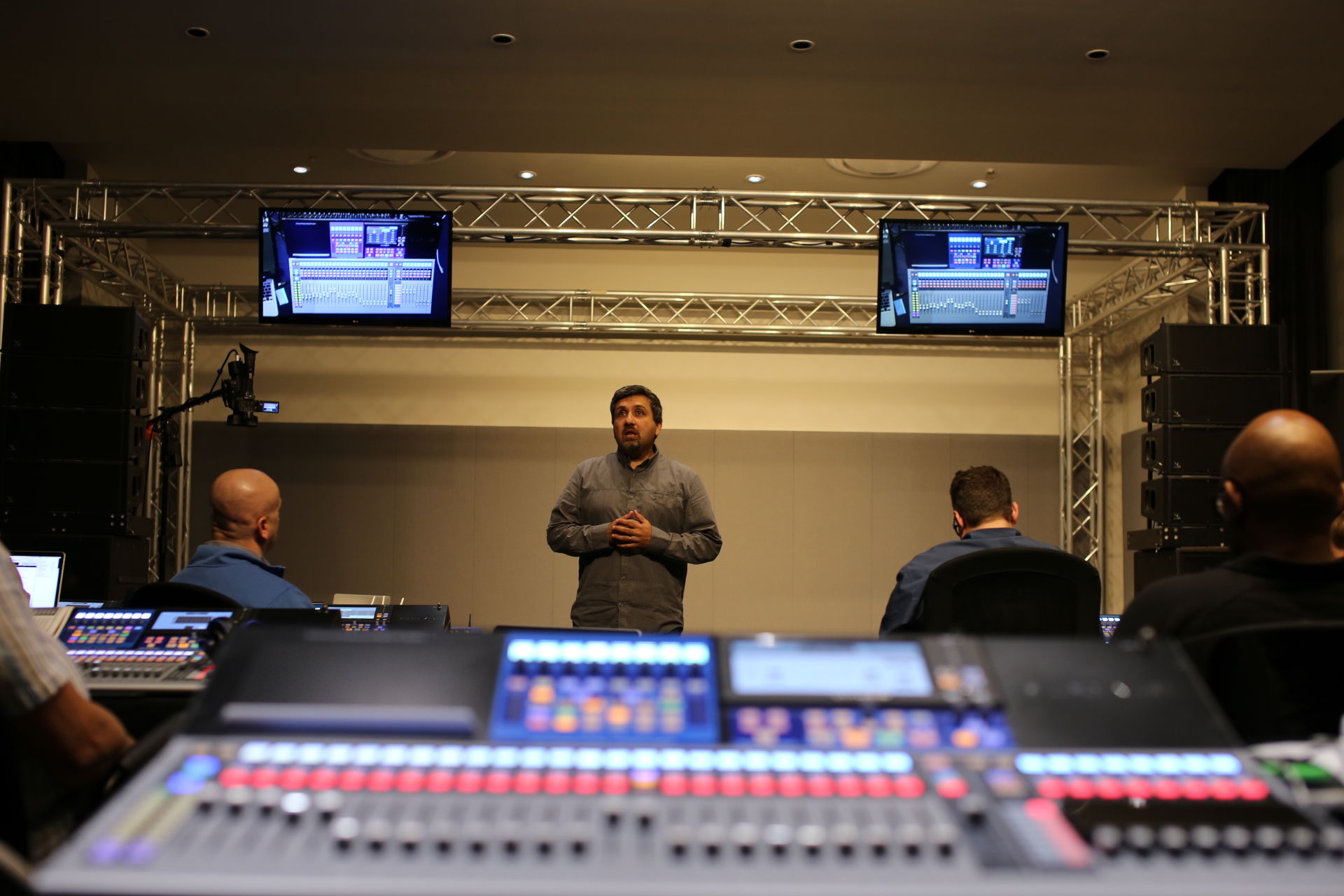 What about PreSonus made you want to work here at the time?
What about PreSonus made you want to work here at the time?
I knew Jim Odom from the local music scene. He was one of our hometown guitar heroes and although he was a few years older than me, we went to the same high school and even took guitar lessons from the same guy. I did a recording session with him in the early ’90s and he used to come into the music store I worked at. I remember him bringing in the prototype of the very first PreSonus product, the DCP-8, about a year before PreSonus started. When Jim approached me about being a part of a startup company, it was a no-brainer for me.
Let’s talk about the Rick Naqvi Effect. People LOVE you and recognize you as the face of PreSonus. How did this come to be? How has it helped you?
Haha!! LOL. Well, I guess since this year will be my 25th year of working at PreSonus, I’m definitely one of the blessed people that found something to do with their lives that has spanned pretty much my entire adulthood. I’ve always been passionate about music and technology and I love people. So PreSonus has been the perfect place for me. I’m in awe of the fact that people use our products to share and experience music together with each other. That’s the part of this job that never gets old. I love being part of a team whose mission is to help people make music.
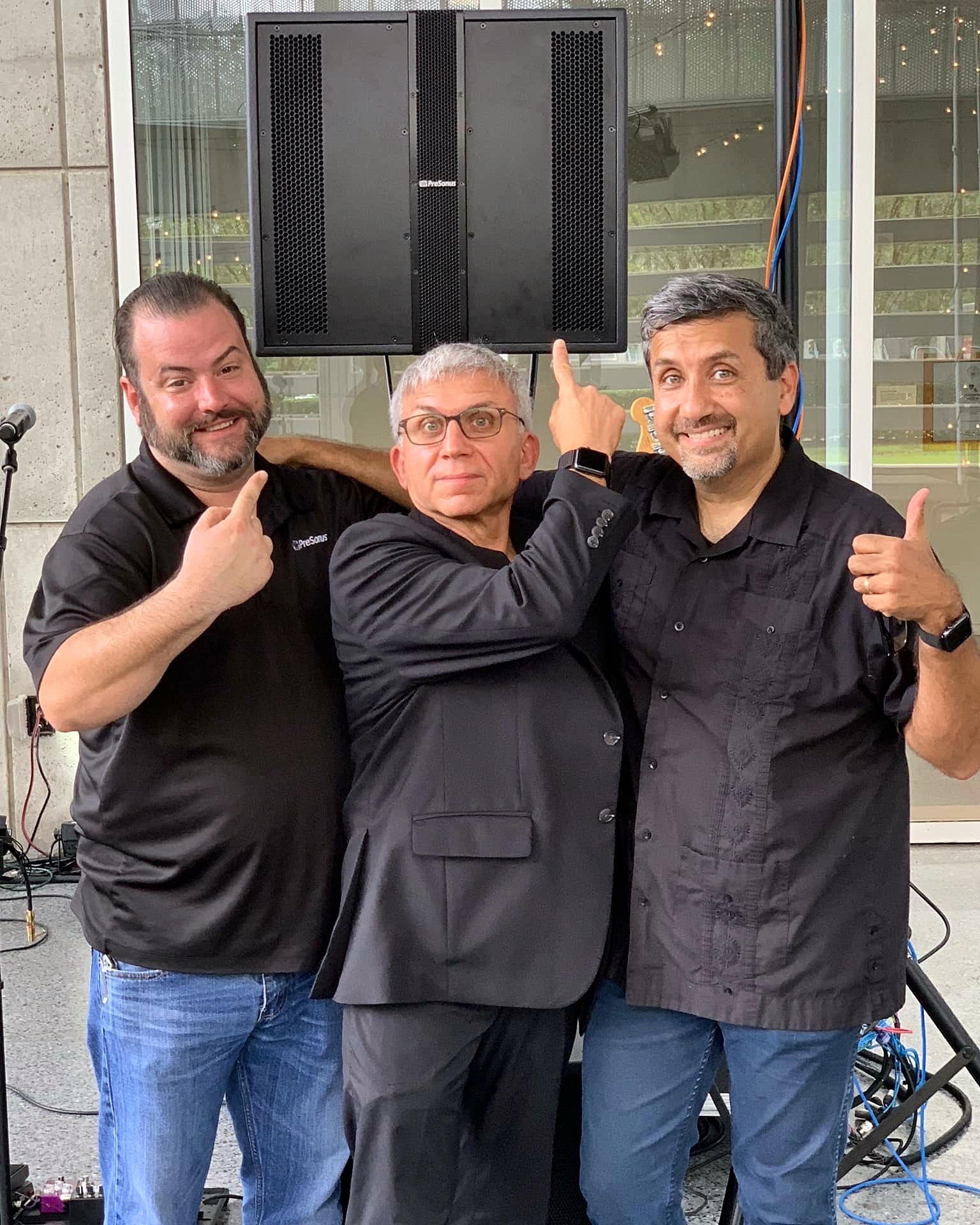 The FirePod was one of PreSonus’ first major products. What need was the FirePod supposed to meet?
The FirePod was one of PreSonus’ first major products. What need was the FirePod supposed to meet?
The Firepod was the first recording interface with eight microphone preamps in 1U. So you could basically mic an entire drumkit at once. Or record a small rhythm section. It was also one of the first interfaces that allowed for multiple units to be used at the same time. So if you needed 16 simultaneous inputs, you could chain two of them together, and so on.
Any fun stories about the FirePod?
Here’s a true story. The original design for the FirePod had eight inputs but only two mic preamps. Jim Odom was beta testing one of the early prototypes and took it home to record his son’s band. When he realized it was going to be a hassle to hook up additional outboard preamps, he came to work the next day and changed the design of the Firepod to include the other six preamps. We literally had to reshoot images for a tradeshow launch that was happening a few months later. However, putting eight preamps on the Firepod solved a huge need, not only for Jim but for tons of customers. It was one of our most successful products without a doubt.
What has been one of the biggest challenges of working at PreSonus? Major roadblocks?
Working for a technology company has its ups and downs. There have been good years and not so good ones too. Sometimes you create a product that really resonates with people and other times there are challenges that keep a product from its full potential. There’s nothing more important to us than delighting our customers. And when we can’t do that, it is a major bummer for us. Thankfully, our mistakes give us the experience to get better and that’s what we strive to do every day.
In 1995, how did you define success?
One of my first job tasks was to contact dealers and try to tell them about our product. I had a copy of Music Trades that had a list of the Top 100 US Dealers. So I literally picked up the phone and started cold calling people! It was so hard to tell people about a brand new product from a brand new company that they had never heard of. It was amazing just to get someone on the phone who would give me the time of day. Amazingly a bunch of people that got called by a 25-year-old Rick Naqvi are still in the business and are some of our most trusted dealers and life-long friends.
Tell us a cool NAMM story. Or any other PreSonus story.
One time at a NAMM Show I had to give a DigiMax demo to Steven Seagal. Turns out he’s a musician and had a studio at the time. It might have been one of the strangest demos of my life. He was super serious and never cracked a smile. When I told him you could only do 96k using AES outputs, not ADAT, I thought he might judo chop me or something.
When you think about the last 25 years, how does it make you feel seeing how far PreSonus has come?
It really doesn’t seem like I’ve worked for one company. It seems like I’ve worked for about 5 different companies. I’ve been through three building moves and I’ve seen tons of people come and go. I’ve seen kids of our employees grow up and start families of their own. It’s truly humbling to have been a part of this great journey.
Starpoint Gemini 3 With Nikola Jeremić
For those of you who are not familiar with Nikola (Nik) Jeremić’s work on the previous iteration of the Starpoint Gemini videogame soundtrack, you can find out about that here.
This will be a “deep dive” into how Nik used Studio One Professional along with the ATOM and our Studio 1824c interface to route audio and MIDI data to and from external hardware synths… his own words!
ATOM Controller
The most important thing about ATOM in this production is that it is used both as a playable instrument, as well as editing and mixing controller.
The layout was very simple in terms that it already integrates itself perfectly with Studio One, and I didn’t have to do much with tweaking it.
So far it completely replaced my old Classic FaderPort (which I still own and use it from time to time) in regards to transport commands, writing automation for track levels, panning, and the amount of signal being sent to FX tracks. I will surely upgrade myself with the current FaderPort pretty soon because I have worn out the buttons on the old one from years of usage.
I used small sticky tags in order to label the four knobs, so I always know which knob controls which parameter.
After the transport tab buttons, the ones I used the most are Song Setup, Editor and instrument Show/Hide. It really speeds up my workflow, and it was especially helpful on this game. Since 80% of the game’s soundtrack was done in the box, browsing through instruments and editing their MIDI data was really easy and fast.
One of the things that really amazed me regarding ATOM was the fact that every pad is labeled with the corresponding default control in Studio One Editor. I rarely touched my computer keyboard for editing.
Whenever I wanted to make a quick edit of my parameters in Impact, or any other instrument that matter, I just hit that Show/Hide instrument button, and… voila! Everything is right there at my fingertips! I will talk more about ATOM and Impact XT later.
Studio 1824c Interface
I used FireStudio Project for over eight years, and it has been a solid workhorse of an interface for me throughout my career. It worked flawlessly until I had a power surge at my home, which fried some of my gear, including the interface, so THAT was the only reason I had to replace it.
It actually happened in the middle of my work on Starpoint Gemini 3, so I researched a little and decided to go with Studio 1824c as an upgrade. To be honest, it’s as if I never replaced my old interface, because PreSonus hardware is really great when it comes to communication with Studio One, so the only thing I had to do was to plug it in my PC and install the latest drivers, and that was it. My production of this soundtrack hasn’t stopped at all, because everything was so compatible, so I just had to re-connect a few audio cables. It took me only minutes and I was back on track.
Since 20% of the soundtrack to Starpoint Gemini 3 is done on hardware synths and instruments, Studio 1824C is a Godsend for connecting all four of my hardware synths:
My Yamaha DX7 was connected via splitter cable as a stereo unit to my inputs 5 and 6.
I also used my three analogue KORG synths: (Volca Bass, Volca Keys, Volca Kick) in stereo via another splitter cable which was connected to inputs 1 and 2, because these Volcas were used the most for this soundtrack.
All of the synths received their MIDI data via MIDI In/Out from Studio 1824c, and I am really happy I didn’t have to buy an external MIDI interface for this. The only thing I had to do was to plug and unplug the midi cables from one synth to another, depending which one I was using at that time, but it’s not a mood killer.
My inputs 3 and 4 were set up as mono. Input 3 has an external 1073 clone mic preamp attached to it, and Input 4 has an external DI for recording and re-amping guitars and bass.
Inputs 7&8 together with Outputs 7&8 were used as stereo FX loop send/return for my FX pedal chain with Pipeline Stereo plugin:
I also used sticky tags to label my front panel of Studio 1824C, and I mapped out my ins and outs inside song setup window, so I could save it as a default setting for all of my tracks for this game.
Regarding my FX chain loop, I used delay, chorus and shimmer reverb pedals in series, and I set them up to be used with Pipeline XT stereo plugin (which comes bundled with Studio One Pro) on an FX track. The reason I opted for this approach instead of connecting my synth output directly to pedals, is because I wanted to have an overall control of the amount of synth signal I am sending to any FX chain. Sometimes I wanted to automate the amount of signal being sent, and that is where those mapped knobs from ATOM came in handy.
I am pretty amazed by the build quality of Studio 1824c, having in mind the price of the unit. I absolutely love the front panel metering and big level knob for main out. Having two headphone outputs is really handy when I invite a session musician to record, because I don’t have a booth, then we both use headphones in the same room. Studio 1824c is a workhorse of an interface and it has improved my workflow ten times better than before.
I amhave yet to build my own Eurorack modular synth, so I can send CV signals via Studio 1824c outs to my synth. That is an AMAZING feature, and I am really looking forward to using it in the future.
Impact XT
Impact XT was an essential part of my beats and percussive materials for both action and exploration tracks, and the way ATOM integrates with Impact XT has been really helpful to my workflow throughout the course of this entire soundtrack.
I used two instances of Impact XT: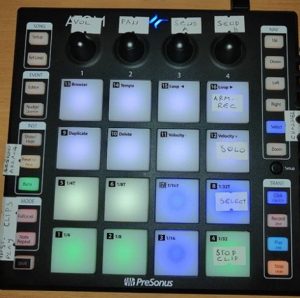
One was for triggering 80s synth drums and transition fills that you can hear in synthwave all the time. The first bank (BLUE) was for elements of the drum kit, and the second bank (GREEN) was for triggering drum fills for transitions between parts.
I love the fact I can trigger loops and audio clips inside Impact XT and sync them to the BPM of my track. All you have to do is to quantize each trigger pad to Follow Tempo and Beats, and no matter what tempo you’re in, it will work flawlessly.
One more thing I like about Impact XT and ATOM is that all the pads can be color-coded the way you like for each bank, because it really helps during the performance to know which pad corresponds to which sound or loop. The bank button on the ATOM itself responds to the bank color of Impact XT, which is really cool.
My second instance of Impact XT was for deep ambient hits and various atonal noises and synth FX for background. I mean, you can’t have a space exploration soundtrack without some weird alien sounds in the background, right??
I love the option of multiple stereo and mono outputs in Impact, so that was really helpful for me to have different FX chains for various drum sounds.
SampleOne XT
SampleOne XT is featuring my main piano sounds for the entire Starpoint Gemini 3 soundtrack. I haven’t recorded actual piano samples, instead I re-sampled a piano VST I am using most of the time for my work. The thing is that this sampled piano uses up a lot of RAM and CPU, so I couldn’t use it in real-time with my other instruments inside my template, because the piano was processed with a lot of plugins, and then it was introducing latency after I had to increase the buffer size.
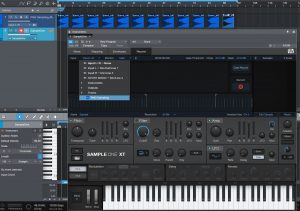 In order to use the sounds that I wanted, I re-sampled this piano in two octaves note by note with the processing included. It was more convenient for me, and it saved me a lot of loading time of the template itself.
In order to use the sounds that I wanted, I re-sampled this piano in two octaves note by note with the processing included. It was more convenient for me, and it saved me a lot of loading time of the template itself.
SampleOne XT proved to be a great choice because it’s really user-friendly and convenient.
First, I had to edit and cut all of the individual notes and label them. That is the only tedious work I had to do here.
After that, all I had to do was to drag the sampled notes to their corresponding key inside Sample One XT. But… I opted for the faster and better solution of sample recording inside SampleOne XT.
Basically what I did was to place all of the samples on the grid, select the audio input inside Sample One XT, choose the starting note and Play, Stop, and Record buttons in order to tell the engine to separate notes. After that, I only renamed the files, and that was it.
After that was done, I was able to play my piano instantly. I saved the patch as a preset, so I could recall it any time.
It doesn’t get any simpler than that, and this is the reason I love Studio One.
Pattern Editor
As I said, ATOM and Impact XT are all over my percussive tracks and beats on this soundtrack, but I also used another drum VST plug-in here in order to make things sound a little bit organic, and I used my 80s synth drum kit as a layer on top of those organic drum parts. Call it some sort of a kick and snare drum sample trigger like you have in metal production.
The option that really inspired me and got my creative juices flowing is the pattern editor in Studio One 4.6.
The way I sequenced my drums and percussion was to play them in at first, and get the most humanization out of them based on velocity, sample offset etc… But then I took those performances and improved them inside Pattern Editor, changed a hit here and there, modify the rhythm, etc… 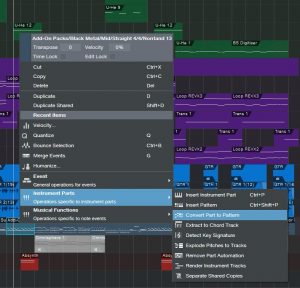
Basically, I had a drum performance on a midi piano roll with all the notes labeled properly, and then I right-clicked on the midi clip to select the option to convert it to drum pattern for editing.
Editing note data inside Pattern Editor is a breeze.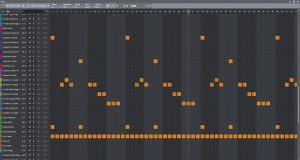
I could easily replace notes, create new performances, shift the beats and add some swing to them in order to make them sound more natural. The option for half-lane resolution is a really cool feature to add triplets and some odd hits, but it allows me to follow the pattern with precision. This is just one example of a pre-chorus pattern inside the action track, and you can clearly see the name of all the notes properly, and I love the way it integrates properly with third party drum VSTs.
It really is a beatmaking workhorse for electronic music. I have yet to test in on cinematic percussion with big drums and more elements.
MIDI FX
MIDI FX in Studio One (the arpeggiator especially) can come in handy if you don’t like the fuss of setting up some complex sequences.
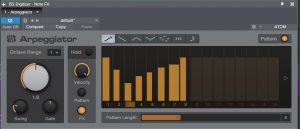 I used arpeggiator mostly on action cues where I wanted to create running sequences in order to have that sense of tension going on during combat. It was mostly set up in 8th or 16th notes, and then I played wide chords on percussive synths in order to get them running and the results were stunning! The arpeggiator is really easy to use, and it was my go-to MIDI effect on this soundtrack.
I used arpeggiator mostly on action cues where I wanted to create running sequences in order to have that sense of tension going on during combat. It was mostly set up in 8th or 16th notes, and then I played wide chords on percussive synths in order to get them running and the results were stunning! The arpeggiator is really easy to use, and it was my go-to MIDI effect on this soundtrack.
Repeater is a whole different beast, and this one is for people who 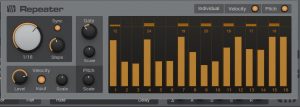 actually like working with complex sequences of scales and melodies. I used Repeater also mostly on action cues for the same reason as the Arpeggiator, but I programmed it to play some aggressive melodies that would counter the chords of the Arpeggiator. I actually have a hardware analogue sequencer, but this was easier and faster to use.
actually like working with complex sequences of scales and melodies. I used Repeater also mostly on action cues for the same reason as the Arpeggiator, but I programmed it to play some aggressive melodies that would counter the chords of the Arpeggiator. I actually have a hardware analogue sequencer, but this was easier and faster to use.
The real fun starts when you place a Chorder in front of Repeater!
What I did with Chorder was to make it play intervals like fifths or octaves, and then sequence those with either Repeater or Arpeggiator.
The results I got were some really complex action sequences which made the game developers smile from ear to ear! I highly recommend trying this approach.
Play Starpoint Gemini 3 here on Steam!
[ Nik’s Official Website | Starpoint Gemini 3 Soundtrack (Bandcamp) ]
Sascha Konietzko (KMFDM) Talks Studio One
Hello… this is Sascha Konietzko a.k.a Käpt’n K, a native of Germany, founder of KMFDM in 1984 (when I was living in Paris, France), a producer and remixer for the past 35+ years.
Besides KMFDM, I’ve done work to more or lesser degrees of involvement with a number of projects on the side: MDFMK, EXCESSIVE FORCE, KGC, SCHWEIN, PIG, and SKOLD, to name a few. As a remixer, I was fortunate enough to contribute to bands such as Metallica, Rob Zombie, Megadeth, The Young Gods, Front 242, Die Krupps and many more.
Under the moniker KMFDM, I have released 21 studio albums, as well as dozens of singles, EPs and live albums.
I’ve been using the PreSonus StudioLive 24.4.2 digital console mixer for live shows (monitor setup) for a number of years now, as well as Studio One Professional and the trusty ol’ Studio Channel. Studio One Professional has been used in my personal studio, mainly to record vocals.
So here’s the story: I’ve been using Pro Tools since 1991; previously I’ve worked with the earlier version of it, which was Sound Designer II. Over the years Pro Tools evolved into a platform with many great features, but also many (not to be underestimated) negative aspects—such as severe latency, under some circumstances.
When I discovered Studio One, which was actually highly recommended to me by KMFDM’s drummer Andy Selway, I found out that I could easily use the workflow I’ve come to develop over the years with the click of a button, PLUS… and this is the absolutely greatest feature of Studio One Professional in my mind: without any latency AT ALL. It allows me to interchange seamlessly between my recording and my mixing environments!
Seriously, it’s been a lifesaver after so many situations where a recording session just went downhill really quick due to latency issues in Pro Tools, with frustrated performers and a super-frustrated Yours Truly!
Website | Spotify | YouTube | Instagram | Facebook | Twitter
SANGUINE: Cold Blood(ed) With Studio One
SANGUINE are an Alternative Rock Metal band from Exeter in the UK, led by singer Tarin Kerrey and guitarist Nick Magee.
The band released their first Album, Black Sheep, in 2016, co-written by Jesper Stromblad from Grammy Award-winning band In Flames. It gained incredible reviews, and Sanguine went on to tour the UK and Europe with many notable acts including Fear Factory, Megadeth, Skindred, MushroomHead, Hellyeah, Cancer Bats, OPM, Zebrahead, and many more.
“Save Me” single from Black Sheep
Following the tour cycle, SANGUINE returned to the UK to record the follow-up album. They tried various producers, but found the energy wasn’t really connecting and wanted it to feel right. At the same time, they had been playing around with the free version of PreSonus Studio One—Studio One Prime. They found it incredibly intuitive, and as their skills improved they began making higher and higher quality demos. They started showing the recordings to the labels, sponsors, and their inner circle… and the feedback was extremely positive.
When it came to the final decision of who to record with, SANGUINE mixed up the recordings with versions of the same songs from professional producers done in other studios, and asked people to choose their favorite based just on sound. The majority of them picked the band’s version recorded in Studio One.
This inspired the band to fully embrace the program and learn as much as they could in a very short time.
The result is Cold Blood, which like its predecessor has received stunning reviews from both mainstream and underground press/blogs/fanzines.
“Ignite,” single from Cold Blood
In a modern climate where music makes very little revenue compared to the cost of making it, getting the cost of an album down is crucial. The average cost of a rock album is about £10-£20K. Cold Blood cost under £500 to make in total because of Studio One. SANGUINE only used the plug-ins that came with Studio One—as there was plenty to work with!
Perhaps one of the most impressive things about Studio One is its user-friendly interface. Nobody in the band was particularly computer-minded. None of us had any previous experience engineering at all. That alone is a testament to how logical the layout is. The only regret SANGUINE have is not going down this path earlier, because the benefits have been so instant and rewarding.
PreSonus: What PreSonus products have you used and which do you currently use?
SANGUINE: We actually have a really simple and achievable setup. We use Studio One Professional, Tannoy monitors, and a range of mics. We have brought additional plug-ins like Izotope and VSTs, but to be honest 90% of what we ended up using for the album came free with the software. It’s a seriously comprehensive range of sounds to get started with. You could spend weeks alone exploring just them!
We are looking at buying more expansion packs for the next round of recordings. We compensate for our lack of outboard studio gear by using VST plug-ins and extremely high-quality instruments and mics. Nick uses a Manson MBC-1 with Pro Sustainiac Sustainer and Ross uses a Fender Precision bass with Nordstrand Audio custom pickups. Changing to Mansons and Nordstrand gear changed our game quite a bit both live and for the studio. We have learned that having high-quality source sounds, good quality microphones/pre-amps, and a decent soundcard is absolutely key to the end product sounding good.
PreSonus: What led you to Studio One? Was it the company’s reputation, audio quality, ease of use, specific features, price, other factors?
SANGUINE: To be honest it kind of found us! Producer Daniel Flores introduced us to the program during the recording of the Black Sheep album. We had never heard of this DAW before, but Daniel is a true pro, so the fact that he was using it alone was a big validation. You could tell he was excited by the functionality of the program and throughout the recording, he would often show us some of the cool things you could do with it. This sparked our interest.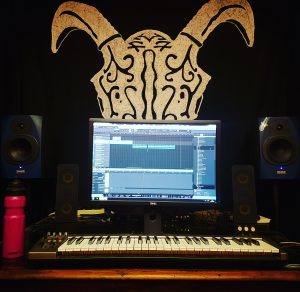
Studio One has a really intuitive layout unlike other DAWs, things are where you would want or expect them to be rather than hidden away in obscure menus. Studio One is easy to use; we rarely have to look up where to find functions and that is a big advantage to the writing process.
We knew that Studio One was being widely used by studio producers but we were uncertain about its capacity to record a live band… we were wrong, it’s just as good as Pro Tools and we would now recommend it as the only option for musicians.
PreSonus: What Studio One features have proven particularly useful and why?
SANGUINE: There is so much included with Studio One, features include everything that their competitors are offering and MORE!
We started the Cold Blood album recording process by recording a live demo of the songs in our band room. We then used Studio One to help us make a decision on which ones to record for the album.
We set up our album project at 96kzHz and recorded the drum stems in a professional studio with an acoustically treated room, and brought the tracks back to our studio to edit, quantize and process. This was nerve-racking for us, as we had never quantized drums before, but again PreSonus delivered by making the drum quantizing and triggering process a breeze. We then laid all the other instruments in our studio using Studio One; it was easy to try something and undo it if it didn’t sound right. We used a mixture of real sounds and plugins to achieve the final result.
For SANGUINE we have found the VSTs, sound packs, synths, and loops included with Studio One Professional inspired us to create and record our new sound. We downloaded a few plug-ins and VSTs but mostly used the free Add-Ons provided by Studio One. SANGUINE always felt like it needed an extra sound in some songs, not enough to warrant a full-time extra member—more just the odd effect, ping, or some other sound to pick up the ear and keep it interesting. Lots of bands do this in our genre like Linkin Park, Slipknot, Skindred, Bring Me The Horizon, etc. The Studio One sounds were exactly what we were looking for, there is a huge range of sounds, but also the ability to forge, combine and bend the audio to pretty much anything you can think up. We now run our extra production sounds live.
PreSonus: How does Studio One compare to other DAWs you have used?
SANGUINE: We played around with Cubase in the early days but it just felt like climbing a mountain. It’s not very motivating as an artist if you can’t get into a good writing flow. We personally didn’t find it intuitive at all. We tried Logic but didn’t find it very logical! After seeing colleagues spend thousands on Pro Tools, we saw a cycle of money going out but never coming back in! In an industry where it is hard to make money, it seemed to us that Pro Tools was only for people with more money than sense!
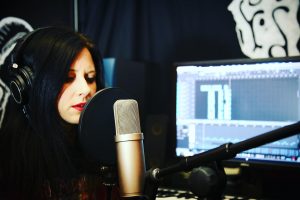 For an untrained eye, most DAWs look complex and difficult to use. None of the band are qualified sound engineers, so usability was the first priority. Studio One offered an interface that was easy to use and a high-quality sound.
For an untrained eye, most DAWs look complex and difficult to use. None of the band are qualified sound engineers, so usability was the first priority. Studio One offered an interface that was easy to use and a high-quality sound.
Originally we just intended to record demo’s on Studio One – but after a while, we started to prefer our versions of the songs to the other Producers we were using. We found that you could use Studio One to experiment quickly with new ideas. It’s changed how we write – writing used to take place in the room but now we often have Studio One running so we can try different beats quickly or see how a section sounds if you add strings. Everything has improved as a result.
In simple terms, Studio One has made it easy for an everyday person with no previous engineering experience or ability, to create professional studio quality recordings without having to spend thousands hiring a traditional studio. That alone blows our minds. We used to spend around £1000 per song. So an album could chalk up £10K pretty easily. The modern music industry just doesn’t provide the economy of scale to make sense of those numbers. Hundreds of thousands of Spotify plays will earn you about £50 for example – so you would have to have millions of streams to earn that back.
By learning Studio One we have essentially eliminated that cost and empowered ourselves to have the freedom to write and release anything we want, whenever we want. As artists, we can’t think of what could be better than having 100% autonomy over our output. Most artists play for the love of music, but due to the towering expense involved with being in a touring band, at some point they have to turn it into a business to continue doing what they love. We have seen so many amazing bands who have exhausted themselves and essentially burnt out trying to make sense of the money side of the business. The bottom line is that eliminating cost makes it easier to return a profit and survive.
PreSonus: Which Studio One feature or concept isn’t talked about enough in your opinion?
SANGUINE: A BIG feature for us was the ease of adding ISRC codes. We had friends who were releasing records at the same time as us who were struggling to get theirs embedded for a sensible price—can’t say that we didn’t feel a bit smug knowing we could do ours within the session—it took us about an hour to sort out. Again, we learned and executed a new task in an hour using only free internet tutorials. That is one of the many examples of how Studio One makes our life easier and cheaper. It’s another process that we previously would have paid someone to do.
Also, I think the depth you can go inside a sound is slightly overlooked—when you start really playing with the parameters of an effect, layering them up/combining you can approximate virtually any sound within reason. Initially, we assumed that we would need to keep topping up the extension packs more frequently – however the deeper we explored the program the more we found. I would advise anyone using this program to spend at least two weeks just exploring the sounds and how you can manipulate them. At first, we grouped sounds that we liked and made notes of their location— after a while though we started using sounds that we never thought we would ever need—for example, sounds that sound irrelevant on their own but amazing within the context of a mix.
We heard that Studio One is very popular with EDM Producers—it’s easy to see why because of the quality of recording produced, sound packs and ease of use. However, we are a rock band, so 90% of the sound we record is played on drum/bass/guitar/vocals. We think if more rock/metal bands knew how radically Studio One could impact their output, many more would jump on board. Our advice would be don’t wait to be told, spend time on it, try it for yourself… and most importantly trust your ears!
PreSonus: Any useful tips/tricks or interesting stories based on your experience with Studio One that would be of interest to our user base?
SANGUINE: This is probably the most relevant question to us out of all of them. Historically every time we tried to record ourselves the programs just seemed too complicated. We would spend hours on a recording in Cubase and obtain a very average result. We put this down to none of us being a qualified sound engineer, but when we moved over to PreSonus suddenly our recording quality went up! We realized it wasn’t our talent it was the usability of the program that was holding us back.
After you master a DAW system you realize that 50% of the songwriting is achieved via the recording and production process. You may have noticed over the last few years that producers are often credited before artists on songs. It’s like the guys that used to be kept in the backroom are now thinking ‘Hang on a minute—who’s the talent here?!’ Mark Ronson is a good example. We don’t blame them—after all the song is only 50% of the process—the production and recording are what makes it viable.
We see a future where the only artists who can survive are the ones who create and record their own music from scratch. SANGUINE have taken this DIY ethic to the extremes and for our latest album, Cold Blood, we literally created every visual and sound ourselves. It meant many nights of reading, trial and error, and a few headaches… but we are now in a position where we can create everything for almost zero cost. The bottom line for any recording is spending hours grooming through the takes until you have the right sound and delivery. When you are being charged in a studio you are “on the clock” and you don’t always achieve the best take or treatment of sound. By taking control of our own recording environment we can spend hours recording and playing around with the music until we have the exact sound we are looking for… I don’t think we could have afforded to pay an engineer or producer for that!
People can overlook how psychological the recording process is – we realised how much our insecurity over our ability to pull this off was impacting us as artists/writers. We had to really learn to trust our ears and what WE thought sounded good.
We blind tested this by recording the same song three ways:
- record with a named producer from scratch
- sending our own recordings to producers and asking them to do a mix
- recording and mixing the song ourselves.
After a blind test listen of these three options we asked our fans and managers to chose which they preferred, surprisingly option 3 was the winner, so we decided to record the album ourselves with no help! Not because the other producers were bad at what they did, more that they simply couldn’t compete with the AMOUNT OF TIME we had to spend on it. Time is free after all, so it is one of an artist’s biggest assets. This confirmed our self-belief that we could do it and we found that energy very motivating—the more positive feedback we got, the more hours we put into it and the better the result. One of the frustrating things is that as you get better you find yourself looking back at songs and pulling them apart/finding fault. Having a studio at your fingertips means you can re-visit those issues and iron them out.
I haven’t met an artist yet who has left a studio being 100% blown away and happy with what they have created with another producer. In fact, it’s more often the opposite. Sure you can go back to a studio and make corrections but it isn’t very practical or spontaneous and you will always be working to someone else’s timetable. Why pay thousands for something you don’t even like that much? Studio One puts our entire catalog at our fingertips. It also means if we need to make alterations like removing vocals for a soundtrack, we can just fire up the computer and do it ourselves. Even a simple task like that would set you back £200 if you were to get a studio to do it for you.
We were joking recently that Studio One is our fifth band member—we feel so in tune with the system it almost feels sentient at times! We might start offering it coffee when we pull a late one…
Finally—something which we didn’t expect was that other bands started asking us to record them and mix their music after hearing ours. This provides an additional revenue stream that we didn’t account for. More money is never a bad thing and it’s a huge compliment to us that after two years we are being asked to do these things. If you had told us this five years ago we definitely would have laughed at you.
PreSonus: Any final comments about PreSonus and Studio One?
 SANGUINE: Even if you have never been good with computers or tried a DAW system before we would urge you to at least play around with the Demo (full-featured Professional version, 30-day license). The gear we listed above is all we used for our record and the entire set up can be brought for a few thousand pounds. This relatively small investment for infinite recordings seems like a no brainer to us. We managed to learn how to record/mix/master and release a record in 2 years from scratch. If Studio One wasn’t as easy to navigate then how would that be possible? The proof is in the pudding.
SANGUINE: Even if you have never been good with computers or tried a DAW system before we would urge you to at least play around with the Demo (full-featured Professional version, 30-day license). The gear we listed above is all we used for our record and the entire set up can be brought for a few thousand pounds. This relatively small investment for infinite recordings seems like a no brainer to us. We managed to learn how to record/mix/master and release a record in 2 years from scratch. If Studio One wasn’t as easy to navigate then how would that be possible? The proof is in the pudding.
It’s pretty rare for us to get this excited about a DAW but it has fundamentally changed everything from our recording all the way down to how we write and the business models that we use. We now have 1/10th of the previous outgoings and this has allowed us to scale the band much faster than previously. What was once by far the biggest expense a band has now reduced to practically zero. The more we use it the more we will improve which is also exciting.
Finally… artists need to understand that the music industry has fundamentally changed forever. The days of making millions from music are long gone and eventually, only those who can sustain will be able to survive. We predict a future where only producer/writer/performers will realistically be able to survive. It’s no longer enough to just be a musician. Recording is the bread and butter of any band so if you do one thing this year: try Studio One.
For us, it changed everything!
Website | Instagram | Twitter | Facebook
